Henry Pheil (Heinrich Pfeil) 1920-1984
Biography
This is the story of Heinrich Pfeil (Henry Pheil). Heinrich was born on October 13, 1920 in Berlin. His father, Moritz, a bookseller, who sold books from a room at the back of his house, was born on December 7, 1876 in Trockenberg (now Sucha Gora in north-eastern Poland). His mother, Rosalie (Rosa) Charlotte Freund, an English teacher and principal of a school, was born on December 25, 1882 in Landeshut, a small twon in Silesia, Prussia, then part of Germany and now Kamienna Gora in south-western Poland. Rosa’s family originated in Poland, near Lodz. We do not know how they came to that part of the world, nor why they moved to Berlin. They lived at Maybachplatz 15, now Perelsplatz 15.Rosa’s parents were Armand Freund and his wife Fanny, nee Werner. Armand was the eldest of the nine children of Heinrich and Charlotte Freund in Sohrau, Silesia. Charlotte’s father was a baker by the name of Simenauer. Heinrich’s (Armand’s father) father was a rabbi. Armand was a businessman. He owned a business near Auschwitz. Later in life he founded a synagogue. The Werners, Fanny’s family, came from Breslau.
Rosa had three brothers, Hermann Emil, Martin and Erich. Erich was killed in a railway accident. Martin survived the Nazis but was deported by the Russians during their drive on Berlin and was never heard from again. His son, Hans, emigrated to Israel, Palestine at the time, and had a son, Gideon and a daughter, Judith. Hermann had two sons, Otto Helmuth, known as Helmuth, and Konrad. Konrad was about the same age as Heinrich while Helmuth was a year younger. Their mother, Hermann’s wife, Mathilde Charlotte, (Tilde) was close to Rosa Pfeil. Hermann’s family lived first in Schoeneberg and then moved to Schlachtensee. They were regular visitors to the Pfeil’s house in Friedenau. Helmuth remembered the tiled oven in the living room that heated their apartment and the store of books in the back. He also remembered that Moritz wrote in an amazingly precise copperplate script.
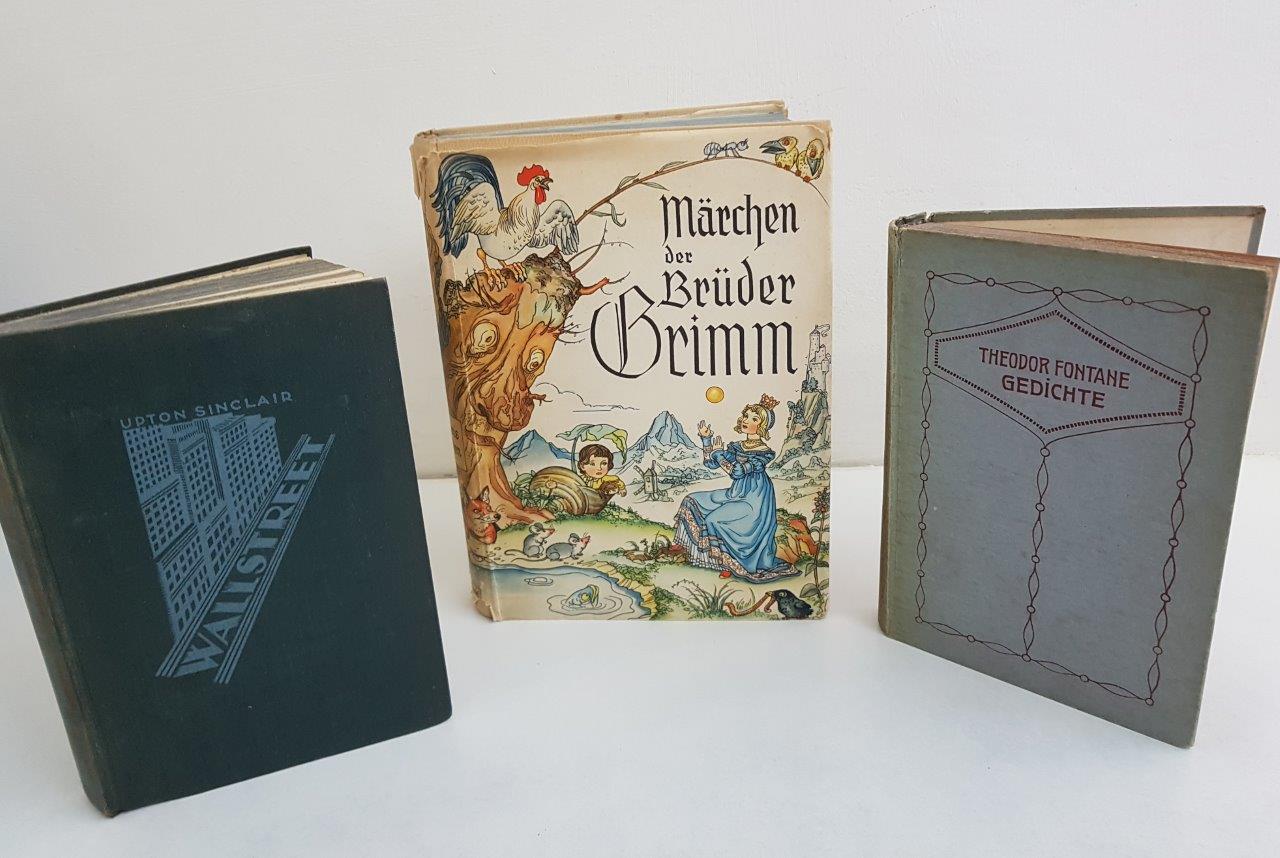
|
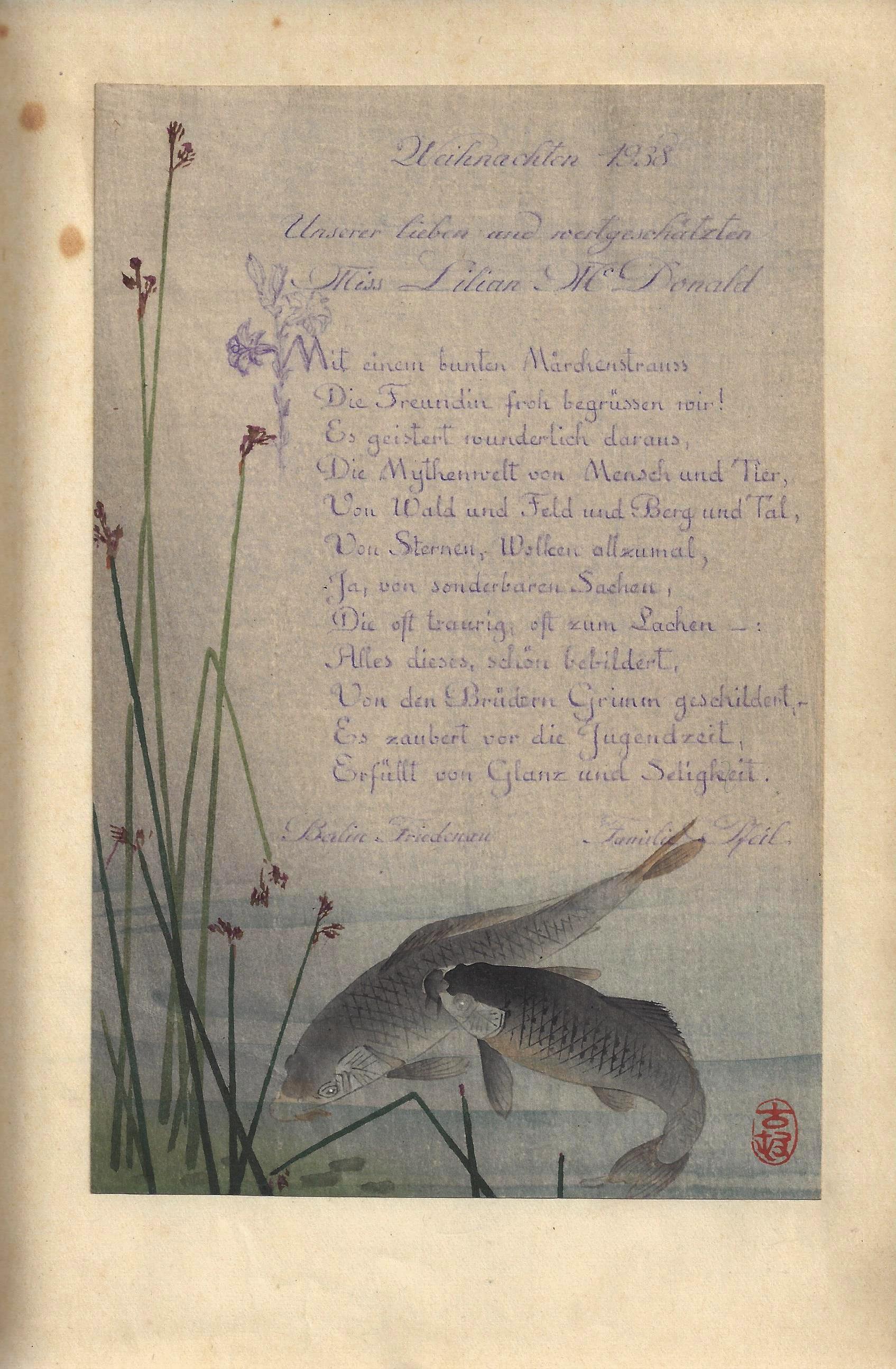
|
|
Examples of books Heinrich received after Lilian McDonald's death.
The books had been sent to Lilian as gifts by Heinrich's parents from the book shop at the back of his house.l\ |
An example of Moritz Pfeil's copperplate handwriting enscribed in Maerchen der Brueder Grimm (The Fairy Tales of the Brothers Grimm, 1937). |
Helmuth had three daughters, Debbie, Jackie and Naomie. Konrad had a son, Mark and a daughter, Miriam. Both Helmuth and Konrad eventually made their way to the United States after living in France till 1936 and then England.
Landeshut, where Rosa came from, lies at the foot of the mountains, the Riesengebirge. Most of the family vacations were spent at Agnetendorf, a village in the Riesengebirge, where Rosa had lived and worked for some time before moving to Berlin. Heinrich had fond memories of hiking in the mountains.
Not much is known about Heinrich’s father’s family, the Pfeil family. We believe his grandfather’s (father’s father) name was Aron Pfeil also known as Fiel. He was an innkeeper in Stollarzowitz [today: Stolarzowice, Poland]. He married to Chanel, nee Goercke. They had a son, Joseph Wolf, born, November 1, 1936. (source: Koenigliche Landrat). We know he had aunts and uncles and cousins in Berlin. One of his cousins, Anita Pfeil, emigrated to Israel, then Palestine, in the early 1930s. There was also a cousin called Miriam who married Zvi Kepes in Israel. There was also Ziggy Hollaender who came out to Palestine (Eretz Israel) as a pioneer in the 1930s to Kibbutz Ramat Yochanan. We know Heinrich was close to a cousin called Egon who was about Heinrich’s age.
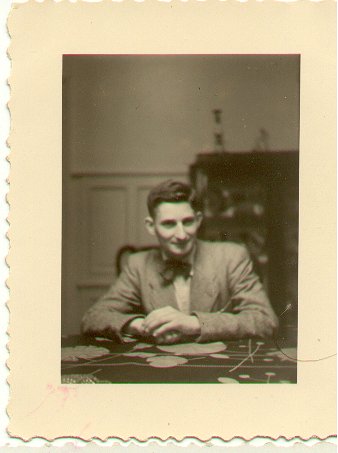
Egon in Berlin, c1939
Egon perished in the Holocaust as did many other members of the family, including Moritz and Rosa. Moritz was deported on October 18, 1941 to Lodz, as was Rosa. On May 8, 1942, they were both subsequently deported to Chelmno and never heard from again. Heinrich never talked much about his life in Berlin and the war years. It was much too painful. However, when he did, it was with great love and fondness.
From records of Yad Vashem:
Pfeil, Egon (* 04.03.1919)
Pfeil, Ida (* 13.09.1879)
Pfeil, Martha (* 16.06.1887)
Pfeil, Moritz (* 07.12.1867)
Pfeil, Rosalie (* 25.12.1889)
Pfeil, Thea (* 18.11.1920)
In his early teenage years, Heinrich attended the Helmholtz Realgymnasium in Schoeneberg, Berlin. Times were difficult as the Nazis rose to power. Heinrich’s cousins, Helmuth and Konrad left Germany together with their parents on March 31st, 1933 and managed to cross the border just before it was closed to Jews. Tilde, his aunt, had the intuition and foresight to believe that Hitler was not just a passing phase. She was not of the opinion that good Germans would oppose him like Heinrich’s parents and many other Jews believed. Moritz and Rosa were liberal Jews and very much steeped in German culture. The Jews had fought in the German army in the First World War and had distinguished themselves, Moritz and members of his family too. It was unthinkable that the nation of Goethe and Schiller would let Hitler have a free rein.
One of the few documents that Heinrich preserved is a school class journal of a long-distance bicycle trip of 1934 that was organized by the Helmholtz Realgymnasium. Heinrich made the illustrations for the journal, an adhoc mix of drawings, photos, postcards, clippings, a map and other relevant memorabilia of the trip.
The journal unintentionally documents Nazism as it took root in 1934. Note in particular the drawing of the "Sieg Heil" Nazi salute of the guard of honor the students were made to form by their supervisor, for the wedding party that they encountered on the trip. The journal ends with the Nazi salutation "Heil Hitler!"
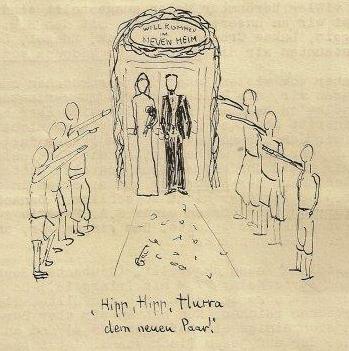
|

|
|
Wedding Guard of Honor, 1934 Caption: "Hip, Hip, Hurra dem neuen Paar!" translation:"Hip! Hip! Hurrah! To the new couple!" |
Dear boys, don’t lose sight of this target destination, and all of you, without exception, should reach it by Easter 1935.
“Commence!” – This is how the “Merker” calls out in Richard Wagner’s “Master Singers” (Meistersänger). “Commence!” Heil Hitler!
Berlin, Zehlendorf, 14-NOV-1934
|
The journal ends with the Nazi salutation "Heil Hitler!"
Heinrich's "happy childhood" was over.
When Jews were no longer allowed to be schooled together with Germans, Heinrich moved to the Joachimsthaler hoehere Handelsschule. This stood Heinrich in good stead later in life as it gave him a technical education. Heinrich was also talented at drawing and used his talent to illustrate the school newspaper, Joachimsthaler Hoehere Handels Zeitungin 1937.
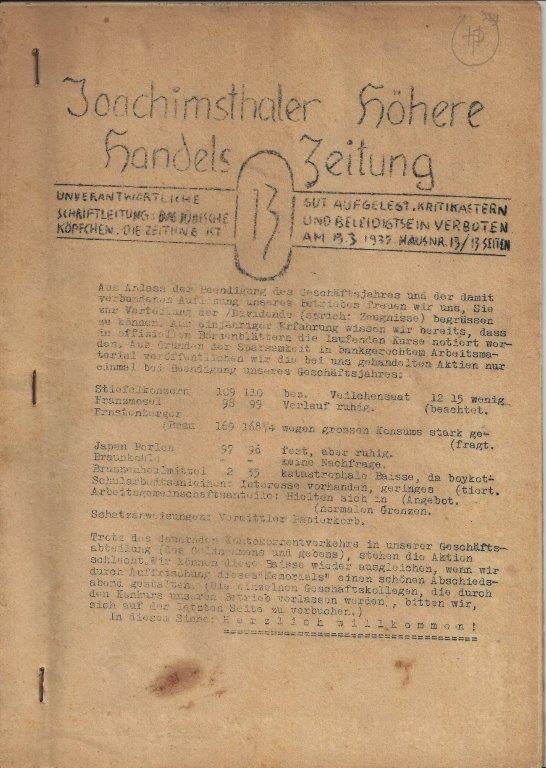
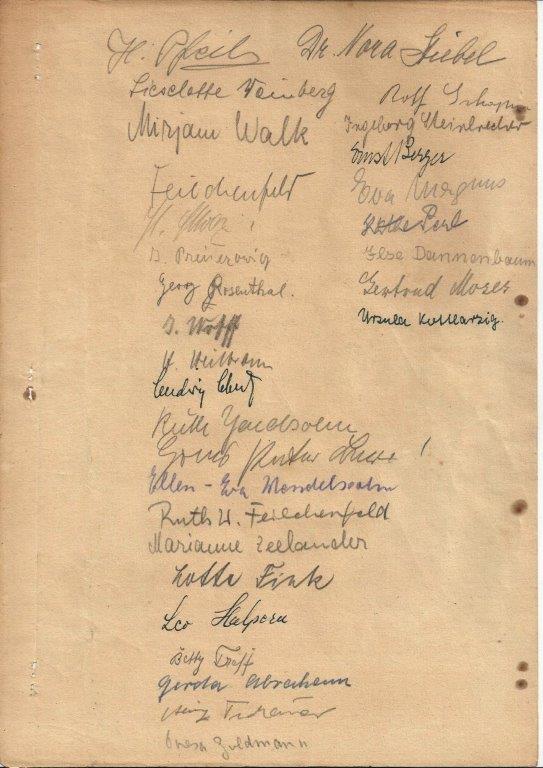
Joachimsthaler Hoehere Handels Zeitung, 1937
Kristallnacht was the clincher. The writing was on the wall. The Jews were desperate to leave. They clamored on foreign embassies for visas, but the doors were shut in every country. Fortunately, as an English teacher, Rosa Pfeil had hosted a Scottish lady, Lilian McDonald, at her school in the capacity of English tutor as an exchange foreign language student in the late 1920s and early ‘30s. Lilian was there to learn German as part of her studies at Glasgow University. Rosa took Lilian under her wing and Lilian was a welcome guest at their home and accompanied Rosa to literary evenings, the “salon”.
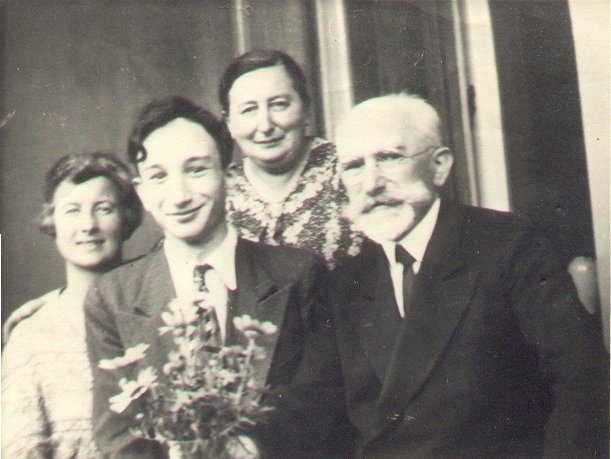
Left to right: Lilian McDonald, Heinreich Pfeil, Rosa Pfeil, and Moritz, Pfeil, Berlin.
They continued their friendship by mail after Lilian had returned to Scotland and now Rosa turned to Lilian to sponsor Heinrich and enable him to get a visa into Britain. Lilian lived with her two sisters in Glasgow. All were unmarried and they did not think it was fitting for Heinrich, a young man, to move in with them, so she organized a place for him with a Jewish family, the Caplan’s, and a job as apprentice engineer in the workshop of the Cina family.
Heinrich arrived in Harwich, England. He spent the first few days with his aunt, Tante Tilde, and cousins, Helmuth and Konrad in Wimbledon, London. From there, he traveled north by train to Glasgow. His first experience in the train traveling from London to Glasgow was not a positive one. When a fellow-traveler enquired as to Heinrich’s destination, in candor he replied with the name of the street where he was going to live whereupon his fellow-traveler exclaimed “Little Palestine”.
The Caplans had a large family and were fairly poor, but despite this, they generously squeezed themselves into more family members in one bedroom and gave Heinrich his own room.
When Germany invaded the Low Countries and Norway in 1940, the British government, afraid of German spies, decided to intern all German nationals over the age of sixteen, even if many of them were Jewish refugees from the Nazis. All Germans were “enemy aliens”. At that time Heinrich was an apprentice engineer at Weir Pumps and he happened to make an innocent remark that the British were not prepared for war. One of his workmates reported him and he was summoned to a tribunal. Not even Lilian McDonald could speak for Heinrich. He was sent first to Edinburgh and then to internment camps at Huyton, then Douglas 10M and on July 4, he set sail on the Sobieski with hundreds of other refugees and Nazi war prisoners, destination Canada. From July 15 until August 12, he was at Camp T -Trois Rivieres near Quebec. After an exhausting 24 hour train journey a large group of internees, including Heinrich, arrived at Camp B – New Brunswick, close to Fredericton. It was his Birthday! The irony of the day was not lost to Heinrich.
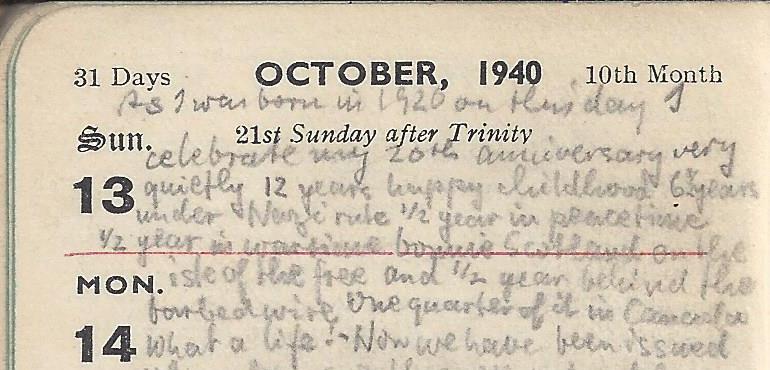
Extract from Heinrich Pfeil's Diary, Camp B - Internment Camp, New Brunswick, (near Fredericton), Canada, Sunday, October 13, 1940:
As I was born on this day I celebrate my 20th anniversary very quietly. Twelve years happy childhood, six and a half years under Nazi rule, half year in peacetime, half year in wartime Bonnie Scotland on the Isle of the Free, and a half year behind barbed wire. One quarter of it in Canada. What a life!
It was a desolate, isolated camp in the middle of woods, a shock to the internees. From escaping Nazi persecution, here again they were being shut behind barbed wire with guards under terrible conditions.
One working tap of water for 600 internees. It was a time of great despair for many. Once again, Heinrich turned to his artistic skills, most likely to keep his sanity, and drew illustrations for at least one of Camp B literary journals, Anderen Seite (The Other side).The title Anderen Seite is itself a play on words in German, as "Seite" means either "Side" or "Page".
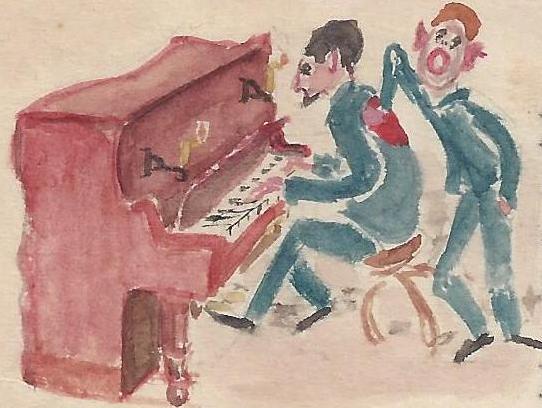
|
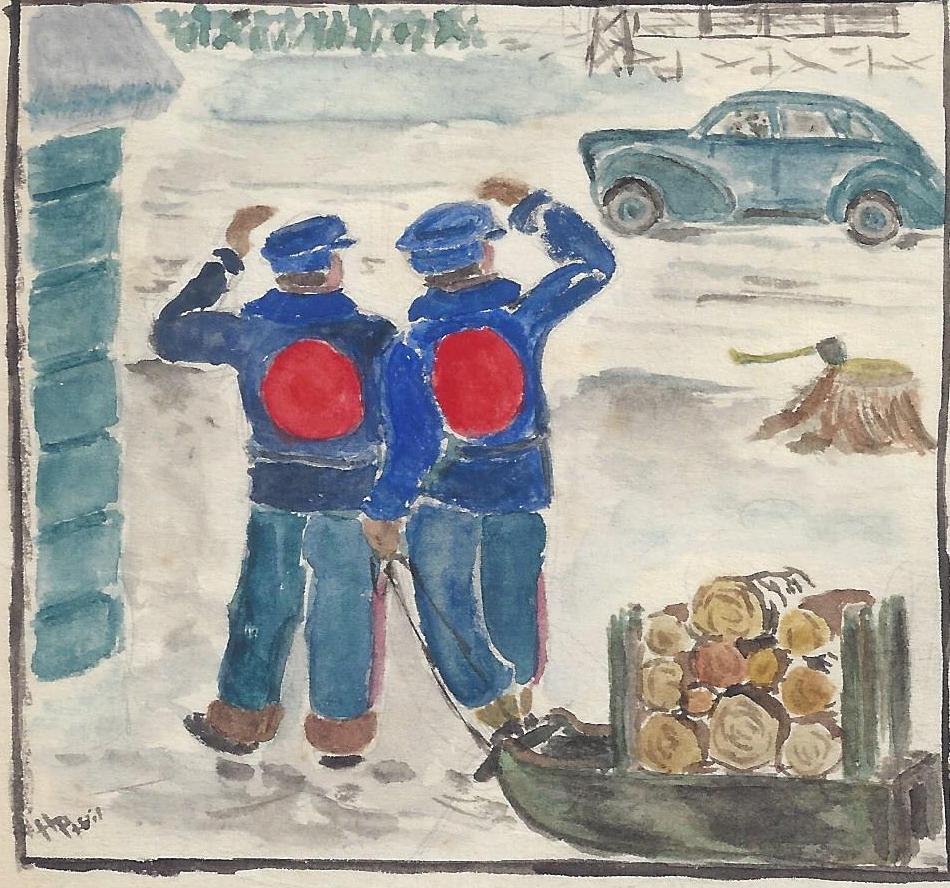
|
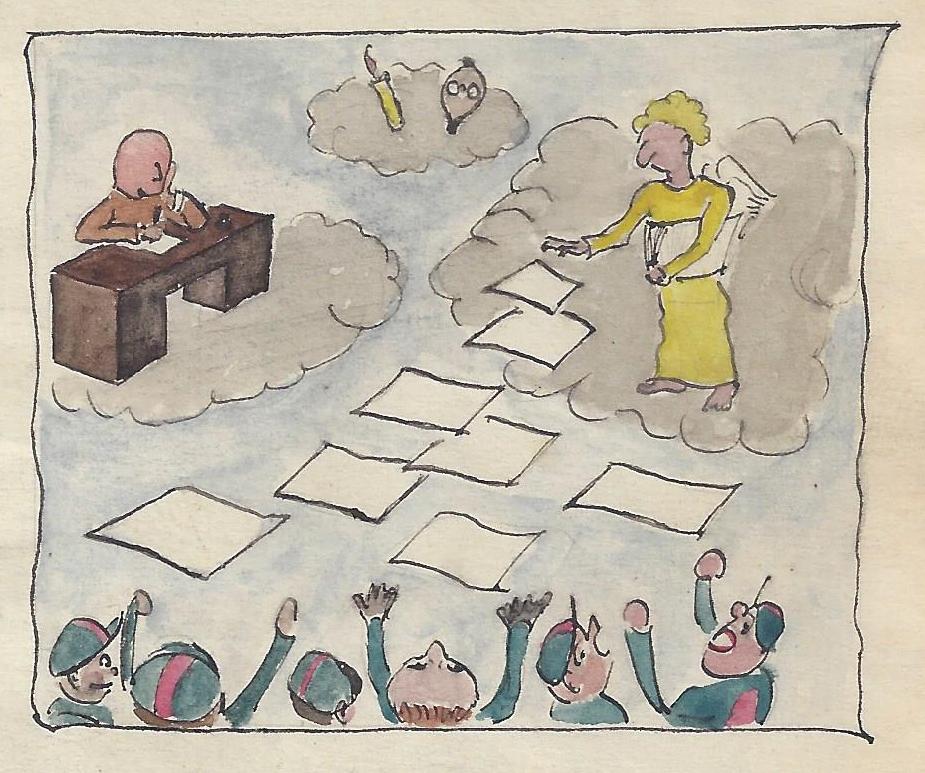
|
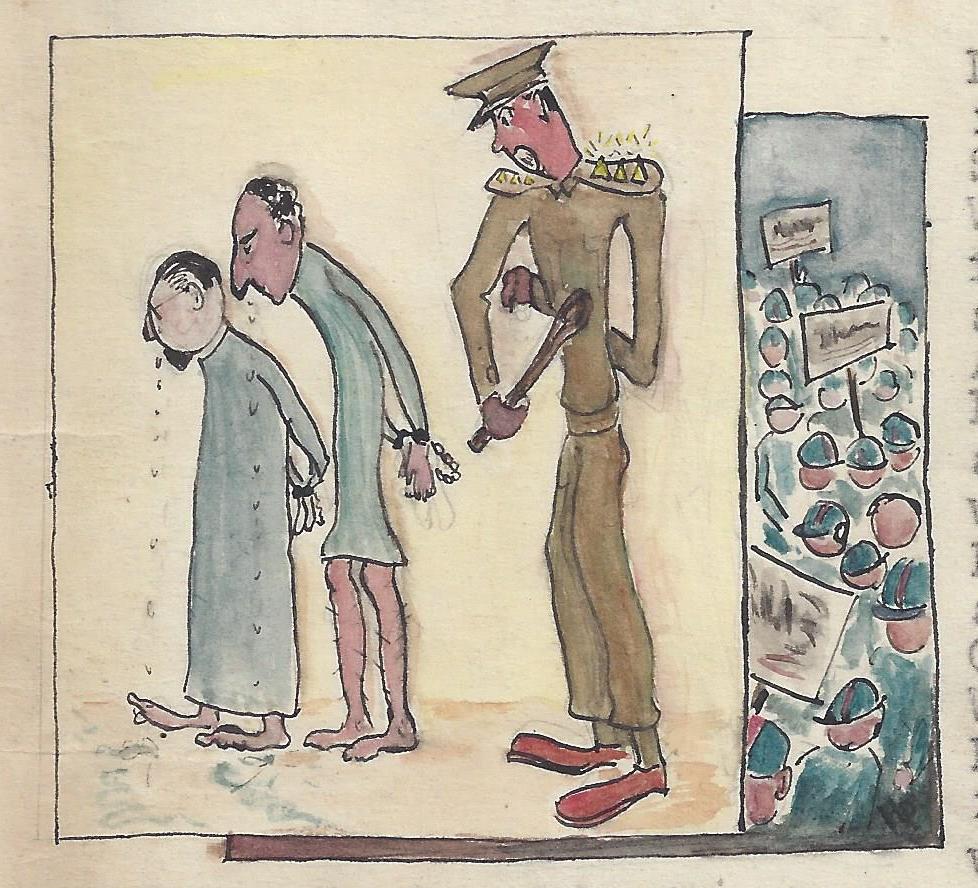
|
|
|
Heinrich left Camp B for Camp N, Sherbrooke, near Quebec. At some point before the end of World War II, he left Camp N, and with the help of a local sponsor, he finally left the camp system and was able to stay on in Canada to study at McGill University before returning to Scotland where he rejoined Weir Pumps. In 1949, Heinrich, a naturalized British citizen now going by the name of Henry Pheil, married Betty Goldszal, also a refugee from Berlin. Their first child, Maurice Joseph, was born in 1954. Henry suffered from depression and had to be hospitalized for a short time. With a lot of help and support from Betty he returned to family life and work. He moved from Weir Pumps to Howden Engineering where he designed power stations and translated technical documents from German. Their daughter, Rose Deborah, was born in 1960. Henry died after a brave battle with illness even before retirement in 1984.
The main sources of our knowledge of his early years are:
*Stumbling stones
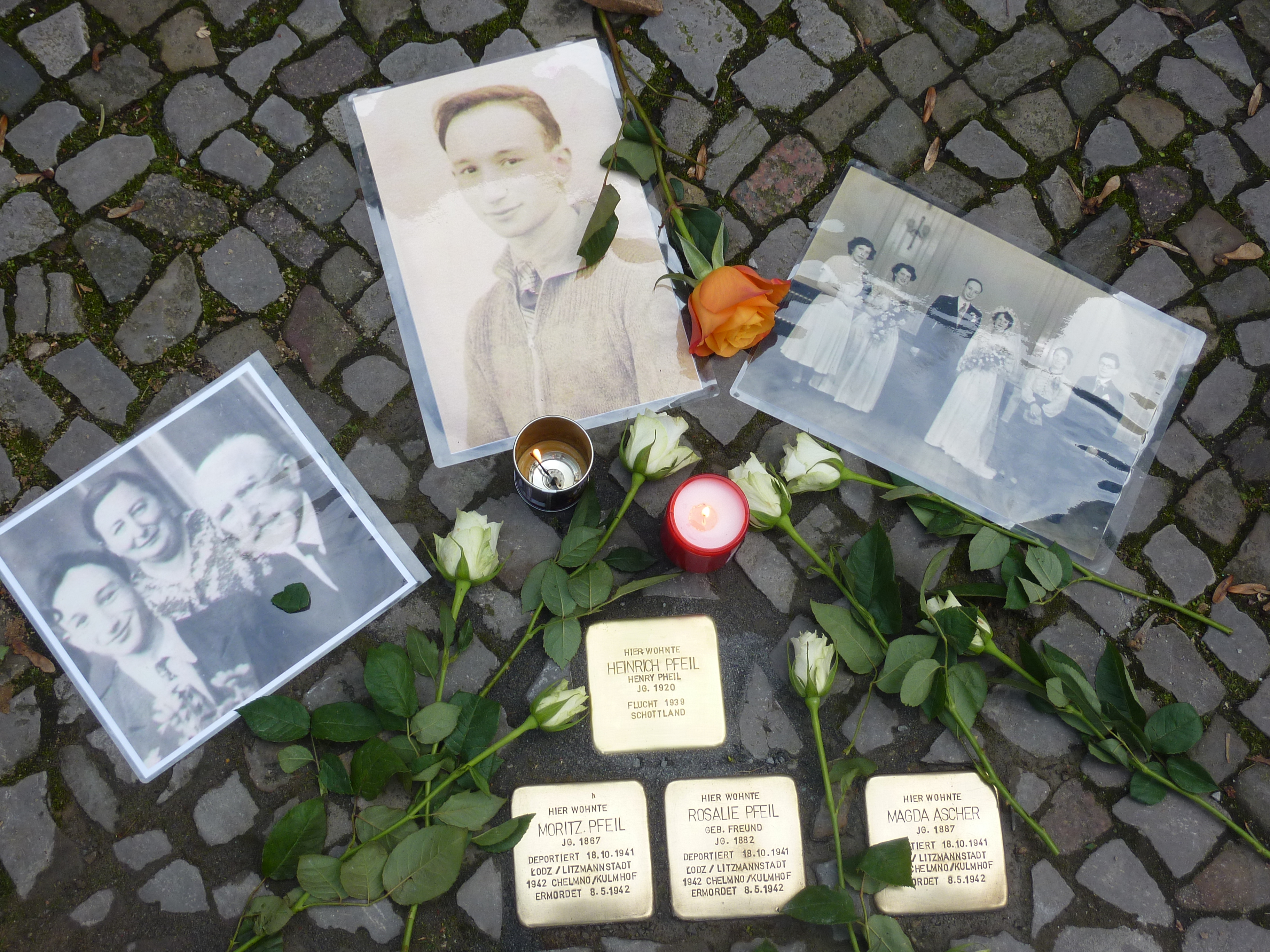
The Stolpersteine (stumbling stones) memorial for Moritz Pfeil, Rosalie Pfeil, Magda Ascher, and Heinrich Pfeil.
|
|
|||